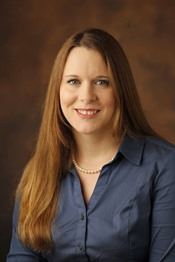Program Information
Assessment of OSL Dosimeter Technology in the Validation of a Monte Carlo Radiation Transport Code for CT Dosimetry
D Carver*, S Kost , D Pickens , R Price , M Stabin , Vanderbilt Medical Center, Nashville, TN
Presentations
SU-F-18C-9 Sunday 4:00PM - 6:00PM Room: 18CPurpose: To assess the utility of optically stimulated luminescent (OSL) dosimeter technology in calibrating and validating a Monte Carlo radiation transport code for computed tomography (CT).
Methods: Exposure data were taken using both a standard CT 100-mm pencil ionization chamber and a series of 150-mm OSL CT dosimeters. Measurements were made at system isocenter in air as well as in standard 16-cm (head) and 32-cm (body) CTDI phantoms at isocenter and at the 12 o’clock positions. Scans were performed on a Philips Brilliance 64 CT scanner for 100 and 120 kVp at 300 mAs with a nominal beam width of 40 mm. A radiation transport code to simulate the CT scanner conditions was developed using the GEANT4 physics toolkit. The imaging geometry and associated parameters were simulated for each ionization chamber and phantom combination. Simulated absorbed doses were compared to both CTDIâ‚₀₀ values determined from the ion chamber and to CTDIâ‚₀₀ values reported from the OSLs. The dose profiles from each simulation were also compared to the physical OSL dose profiles.
Results: CTDIâ‚₀₀ values reported by the ion chamber and OSLs are generally in good agreement (average percent difference of 9%), and provide a suitable way to calibrate doses obtained from simulation to real absorbed doses. Simulated and real CTDIâ‚₀₀ values agree to within 10% or less, and the simulated dose profiles also predict the physical profiles reported by the OSLs.
Conclusion: Ionization chambers are generally considered the standard for absolute dose measurements. However, OSL dosimeters may also serve as a useful tool with the significant benefit of also assessing the radiation dose profile. This may offer an advantage to those developing simulations for assessing radiation dosimetry such as verification of spatial dose distribution and beam width.
Contact Email:


